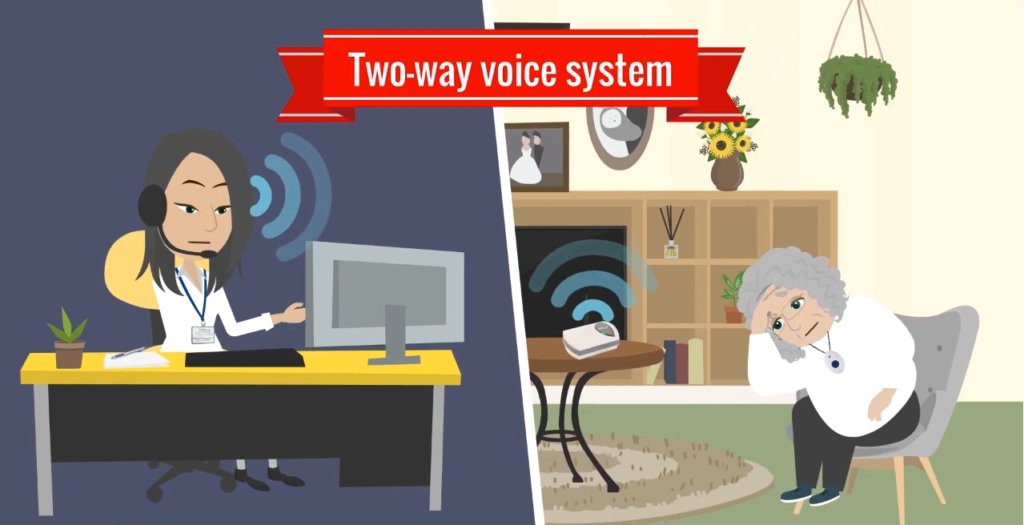Medical alert systems are an essential tool for people with disabilities, allowing them to live independently while still being connected to emergency assistance. Whether living alone or with a caregiver, these devices offer a sense of security, allowing individuals to enjoy life without worrying about what would happen if an emergency were to arise.
Explore the various types of medical alert systems available for people with disabilities, how they work, their features, factors to consider when choosing a system, benefits, and limitations. Join me on this journey to discover why medical alert systems are a crucial investment for anyone living with a disability.

What are the Importance of Medical Alert Systems for People with Disabilities?
Provide a Sense of Security and Peace of Mind
Medical alert systems are of utmost importance for people with disabilities as they provide a sense of security and peace of mind for the individuals themselves and their families and caregivers. These systems allow individuals to maintain their independence while ensuring that emergency help is just a button press away in case of an emergency.
Quick Access to Medical Assistance
For people with disabilities, emergencies can happen at any time, ranging from a fall or accident to a sudden medical condition. In these situations, quick access to medical assistance can make all the difference between life and death. With a medical alert system, individuals can receive prompt medical attention, which can save their lives.
Easier to Manage Health Conditions
Moreover, medical alert systems come equipped with features such as GPS tracking, voice-activated systems, fall detection, and medication reminders, making it easier for people with disabilities to manage their health conditions. These devices provide an added layer of protection, allowing individuals to stay connected with their loved ones and caregivers, even when they are not physically present.
Give Assurance to Families
Medical alert systems are crucial for people with disabilities as they offer security, independence, and quick response in an emergency. They also help to improve the quality of life for individuals with disabilities and provide their families with the assurance that their loved ones are safe and secure.
What are the Types of Medical Alert Systems to Choose From?
There are three main types of medical alert systems available, each with unique features and benefits. These include:
In-home Systems
These systems are designed for use within the home and are typically connected to a landline or cellular network. They come with a base station and a wearable emergency button that can be pressed in an emergency. Once the button is pressed, the monitoring center is alerted, and emergency responders are dispatched to the location.
Mobile Systems
Mobile medical alert systems are designed for individuals who are frequently on the go or who have an active lifestyle. They are portable devices worn as a pendant or wristband or carried in a pocket or purse. These systems use cellular networks to connect with the monitoring center, allowing individuals to access help wherever they are.
Wearable Devices
These devices are similar to mobile systems but worn as a watch or other wearable technology. They are typically equipped with fall detection, GPS tracking, and heart rate monitoring, making them ideal for individuals with specific health conditions or mobility issues.
The type of medical alert system best suited for an individual with disabilities will depend on their lifestyle, health needs, and preferences. It is essential to consider these factors when choosing a system to ensure that it meets the individual’s specific needs and provides the necessary level of protection and security.

How Medical Alert Systems Work?
Medical alert systems connect users to a monitoring center that can quickly respond to emergencies. The following are the key elements of how medical alert systems work:
- The role of monitoring centers: When a user activates their Medical Alert System, the signal is sent to a monitoring center staffed by trained professionals who can assess the situation and dispatch the appropriate emergency services. The monitoring center staff may also attempt to communicate with the user to determine the nature of the emergency.
- How alerts are triggered: Medical alert systems can be triggered in various ways, depending on the type of system. In-home systems typically have a wearable button that can be pressed in an emergency, while mobile systems and wearable devices may have buttons or sensors that can detect falls, unusual movements, or other medical events that may require attention.
- Communication methods between the user and the monitoring center: Most medical alert systems offer two-way communication between the user and the monitoring center, either through a speakerphone on the base unit, wearable device, or mobile app. This allows the monitoring center staff to communicate with the user and provide reassurance or instructions until emergency responders arrive.
Medical alert systems directly link users and emergency services through a monitoring center. The system is designed to quickly and efficiently respond to emergencies, providing individuals with the peace of mind to live independently and safely.
Best Features of Medical Alert Systems For People with Disabilities
When considering medical alert systems for people with disabilities, it’s important to look for specific features that can provide additional safety and support. The following are key features to look for when choosing a system:
- Voice-activated systems: Voice-activated systems allow users to communicate with the monitoring center hands-free, which can be particularly helpful for individuals with mobility issues or who have difficulty using their hands. This feature enables users to request assistance without needing to press a button.
- Fall detection: Fall detection is an important feature that can automatically trigger an alert if a user falls or experiences a sudden impact. This feature is particularly valuable for individuals with mobility issues or at risk of falls.
- GPS tracking: GPS tracking enables the monitoring center to locate the user in case of an emergency. This feature is especially useful for mobile systems and wearable devices, allowing emergency responders to quickly locate the user even if they are away from home.
- Medication reminders: Medication reminders are helpful for individuals who require medication management. The system can alert the user when it’s time to take their medication, reducing the risk of missed doses and ensuring that medications are taken on schedule.
- Fire and carbon monoxide detection: Medical alert systems can also include fire and carbon monoxide detection, alerting the monitoring center in case of a potential emergency. This feature provides an additional layer of protection for individuals who may be unable to respond to alarms independently.
These features can provide additional support and safety for individuals with disabilities, helping them to live independently and with greater peace of mind. It’s important to consider each of these features when choosing a Medical Alert System to ensure that the system meets the specific needs of the individual.
Factors to Consider When Choosing a Medical Alert System
Choosing the right Medical Alert System is an important decision that requires careful consideration. Here are some of the key factors to keep in mind when selecting a system:
Cost
Medical alert systems can vary significantly in price, so it’s important to consider the cost of the system and any ongoing fees, such as monitoring or equipment rental fees. It’s also worth looking into any available discounts or financing options.

Range of coverage
Depending on the individual’s lifestyle and needs, the range of coverage offered by the system may be an important factor to consider. For example, if the individual spends a lot of time outside the home, they may require a system with a wider range of coverage.
Battery life
Battery life is important, particularly for mobile and wearable systems. It’s important to look for a system with a battery life that can be easily recharged for an extended period.
Customer service and support
It’s important to consider the level of customer service and support the provider offers. This includes the availability of technical support, the ease of contacting customer service, and the provider’s reputation for customer service.
Compatibility with existing medical devices
If the individual is already using medical devices, such as hearing aids or pacemakers, it’s important to ensure that the Medical Alert System is compatible. This helps avoid any potential interference or compatibility issues.
By considering these factors, individuals can choose a Medical Alert System that meets their specific needs and provides the necessary level of support and security. It’s important to carefully research and compare different options before deciding.
Limitations of Medical Alert Systems for People with Disabilities
While medical alert systems offer many benefits for people with disabilities, there are also some limitations. Here are a few of the most common limitations:
False alarms
Medical alert systems can sometimes trigger false alarms, which frustrates the user and the monitoring center. This can occur if the user accidentally presses the button, for example. While false alarms are typically rare, they can still occur.
Limited range of coverage
Depending on the system, there may be limitations on the range of coverage provided. For example, in-home systems may be unable to detect emergencies outside the home, while mobile systems may have limited coverage in certain areas. It’s important to consider the range of coverage the system offers when selecting a Medical Alert System.
Dependence on technology
Medical alert systems rely on technology to function, which can be a limitation in certain situations. For example, if there is a power outage or technical issues with the system, it may not be able to function as intended. Additionally, people with certain disabilities may have difficulty using technology, which could limit their ability to use the system effectively.
While these limitations should be considered when selecting a medical alert system, they are outweighed by the benefits these systems can offer. With the right system and proper training, people with disabilities can benefit greatly from having access to immediate assistance in emergency situations.
Why Consider Investing in a Medical Alert System for People with Disabilities?
Investing in a medical alert system for people with disabilities can provide numerous benefits, including peace of mind for the user and their loved ones, quick response in emergency situations, increased independence, and improved quality of life. By offering immediate access to help, these systems can help individuals to live with greater confidence and security and potentially even save lives in the event of an emergency.
While there are some limitations to consider, such as false alarms, limited range of coverage, and dependence on technology, these are outweighed by the benefits that medical alert systems can provide. With proper research and consideration of factors such as cost, range of coverage, battery life, and customer service, individuals can find a system that meets their unique needs and preferences.
Investing in a medical alert system can be a smart decision for people with disabilities and their loved ones. By providing added security and peace of mind, these systems can help individuals to live more independently and enjoy a higher quality of life.
